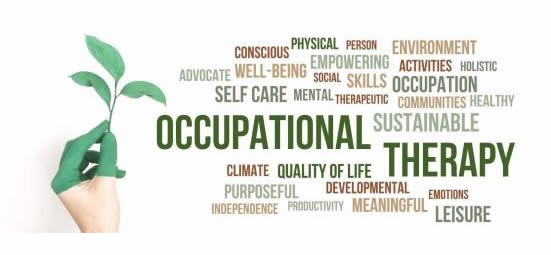Learning in the time of Coronavirus

Sheila Doughty.
Area Therapy Lead, Horsham Hospital
During the corona virus pandemic I have been extremely lucky to have been working as a physiotherapist alongside a dynamic and innovative multi-disciplinary team on the Horizon Unit in Horsham. This is a 38 bedded Intermediate Care Unit with a predominantly frail, elderly caseload. At the beginning of April 2020, 4 therapists were redeployed to the unit to work alongside permanent staff - helping support new discharge pathways and ensure patients were discharged swiftly once medically fit. All of these staff had experience of working in a community hospital and were keen to refresh their skills in this area.
One of the Occupational therapists, who had recently been working in the wheelchair services, took onboard the complex discharge planning for a lady with a history of cervical myopathy leading to C3 laminectomy and T5 wedge fracture. She had been admitted with covid pneumonia. Her normal accommodation was not ideal for her level of ability, so it was essential that we had as much information about it as possible. The following is a reflection, written by her, of how she was able to embrace a new way of working, to enable the discharge to progress, at the height of the Covid 19 outbreak in our area.

"It usually takes me a while to get round to reading copies of OT News, but as a re-deployed staff member I thought there might be some helpful advice in this month's edition focusing on Coronavirus. There was an article from an OT who had previously worked in New Zealand, explaining how she had started carrying out virtual access visits to avoid lengthy travel times. She wrote about using this experience to help with discharge planning during lockdown. I wondered if I could do the same thing in my current role on one of SCFT's in-patient care units.
At work the following day there was an obvious candidate for trialing a virtual access visit - a patient who lived in a residential complex which was unwilling to accept NHS visitors in the current climate. With the client's consent, I spoke to her full time carer and talked through the option of using Skype to facilitate an access visit. Her carer was not very confident with new technologies, but had used Skype in the past and did have a smartphone. We agreed a time when she could visit the property.
The ward has iPads set up with Skype to allow patients to communicate with their families. I used one of these at my end. I checked in advance that the carers' details were correct and was able to use a separate room to avoid distractions and ensure confidentiality.
I was not sure how well the call would work. Many people can now relate to how difficult it can be to try to help someone connect online when you are not with them in person! There were some issues for the carer as she kept losing the image from her phone screen, but she was able to point the camera where I guided, and I got a really clear picture of the home. Unfortunately, the carer had forgotten to find a tape measure before the call, but she took note of the measurements that were needed and called back later.
In addition to facilitating a visit we would otherwise have been unable to do, the call took less than fifteen minutes and I saved over one hour of travel time and expenses. Even once normal ways of working resume this method would help save time and resources when discharge planning.
This is something I am thinking about applying to my usual job in Wheelchair Services on my return. We cover a large geographic area and this could help us to identify environmental issues when we are planning to assess someone with a powered wheelchair. Powered chairs are very heavy, so sometimes even small steps and thresholds mean we can't take an assessment chair in to a property. We do lose clinical time going to visit properties that are not accessible. Hopefully, this new way of working will be of ongoing benefit."
Embracing new technology has been key to the team working successfully over the last few weeks. The iPads, donated by NHS charities, arrived at a time when patients and staff alike were feeling isolated and missing contact with family, friends and colleagues. We have been able to facilitate patient / family conversations via skype on a regular basis including 3 way discussions about discharge plans, as well as using them to undertake mandatory training via skype, share rehab activities on Twitter and have virtual meetings with colleagues. Cross site MDT training sessions have taken place with laptops to view PowerPoint and iPads to run the meeting. Ipads have also been used to set reminders for patients to ensure adequate hydration and could be used to encourage increased activity levels in community hospitals and much more. I am confident that staff will continue to embrace new ways of working both on the ICU and when they return to their usual workplace and hope that more innovative ideas will develop for the benefit of patients and staff.
